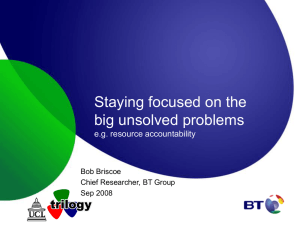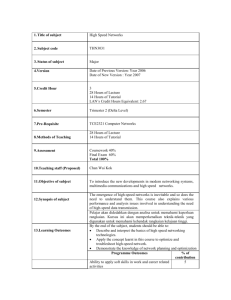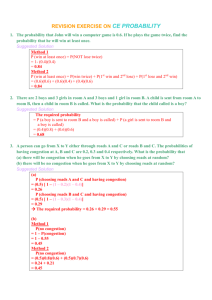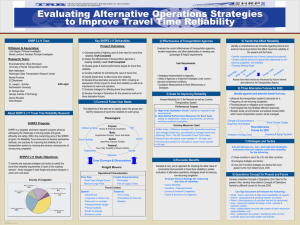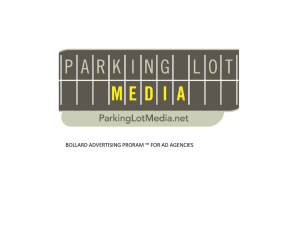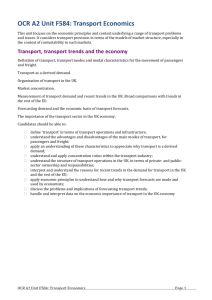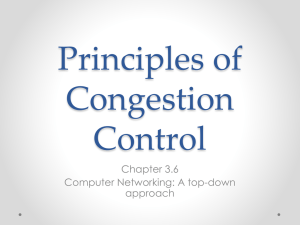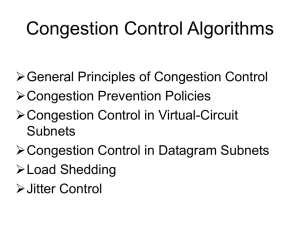Urban transport: The publics vs private debate
advertisement
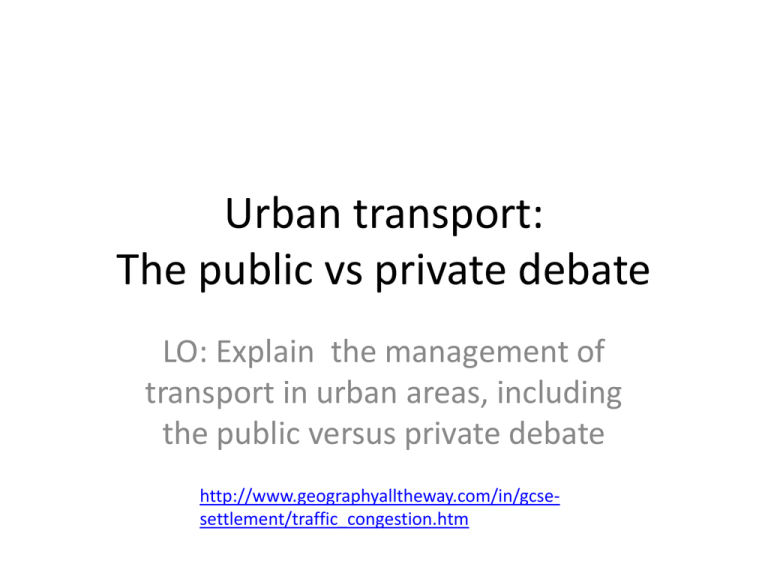
Urban transport: The public vs private debate LO: Explain the management of transport in urban areas, including the public versus private debate http://www.geographyalltheway.com/in/gcsesettlement/traffic_congestion.htm Describe the pattern shown on this graph (4), p 46 Traffic Facts and Figures from the USA What it Costs • America's families spend more than 19 cents out of every dollar earned on transportation, an expense second only to housing, and greater than food and health care combined. • The individual cost of congestion exceeded $900 per driver in 1997, resulting in more than $72 billion in lost wages and wasted fuel. Lost Time • Congestion results in 5.7 billion person-hours of delay annually in the United States. • Drivers in one-third of U.S. cities spend more than 40 hours a year (an entire work week) in traffic that is not moving. Safety and Health Concerns • In 2003 there were more than 6.3 million motor vehicle crashes reported to police. Of those, 38,252 crashes resulted in fatalities. • In 2001, crashes were the leading cause of death for people ages 4-33 in the United States. Public Transportation • For every passenger-mile traveled, public transportation is twice as fuel-efficient as private automobiles, sport utility vehicles and light trucks. (Source: Centre for Transportation Excellence) • If one in 10 Americans regularly used mass transit, U.S. reliance on foreign oil could decline by more than 40 percent, or nearly the amount of oil imported from Saudi Arabia each year. The Environment • A regular rush-hour driver wastes an average of 99 gallons of gasoline a year due to traffic. • On-road vehicles are responsible for 44 percent of all carbon dioxide emissions in the United States, one-third of all nitrogen oxide emissions and one-quarter of all volatile organic compound emissions. Solutions to traffic problems Rising Bollards • http://www.geographyalltheway.com/in/gcsesettlement/traffic_management.htm Car wrecked by pop-up bollards Imagine you work for the complaints department at Manchester City Council. How would you explain to the driver of a car that has been damaged by raising bollards why the bollards had been installed in the CBD (Central Business District)? Park and Ride Schemes • What are 'Park and Ride Schemes'? • How do they work? • How do they reduce urban traffic congestion? Alternative Transport Initiatives Use news article 'A year on, the cycle experiment has hit some bumps' and then with three different colours highlight the following: • How the bicycle scheme in Paris works? • Any negative elements to the scheme in Paris. • Any positive elements to the scheme in Paris. Remember to add a key to the document to show what the different colours mean. London’s Congestion Charging Scheme – A Case Study of Urban Congestion Management London’s Congestion Charging Scheme – A Case Study of Urban Congestion Management Produce a detailed case study of the Congestion Charges scheme in London, UK. By producing your case study you should develop your understanding of the following: 1. How the scheme actually works – how is money collected?, how are cars monitored? 2. The geographical scale of the scheme. 3. The successes of the scheme. 4. Who is for and against the scheme and why? 5. Any negative impacts about the scheme. 6. The future of the scheme. http://www.geographyalltheway.com/in/gcsesettlement/traffic_management.htm Case study Houston 1. What is the current situation like in Houston?- why is it like this? 2. What has been or could be done in Houston to make the traffic more sustainable? Review • Watch this video clip about how New York is learning to combat traffic congestion from London, Paris and Copenhagen. http://www.geographyalltheway.com/in/gcsesettlement/traffic_management.htm


